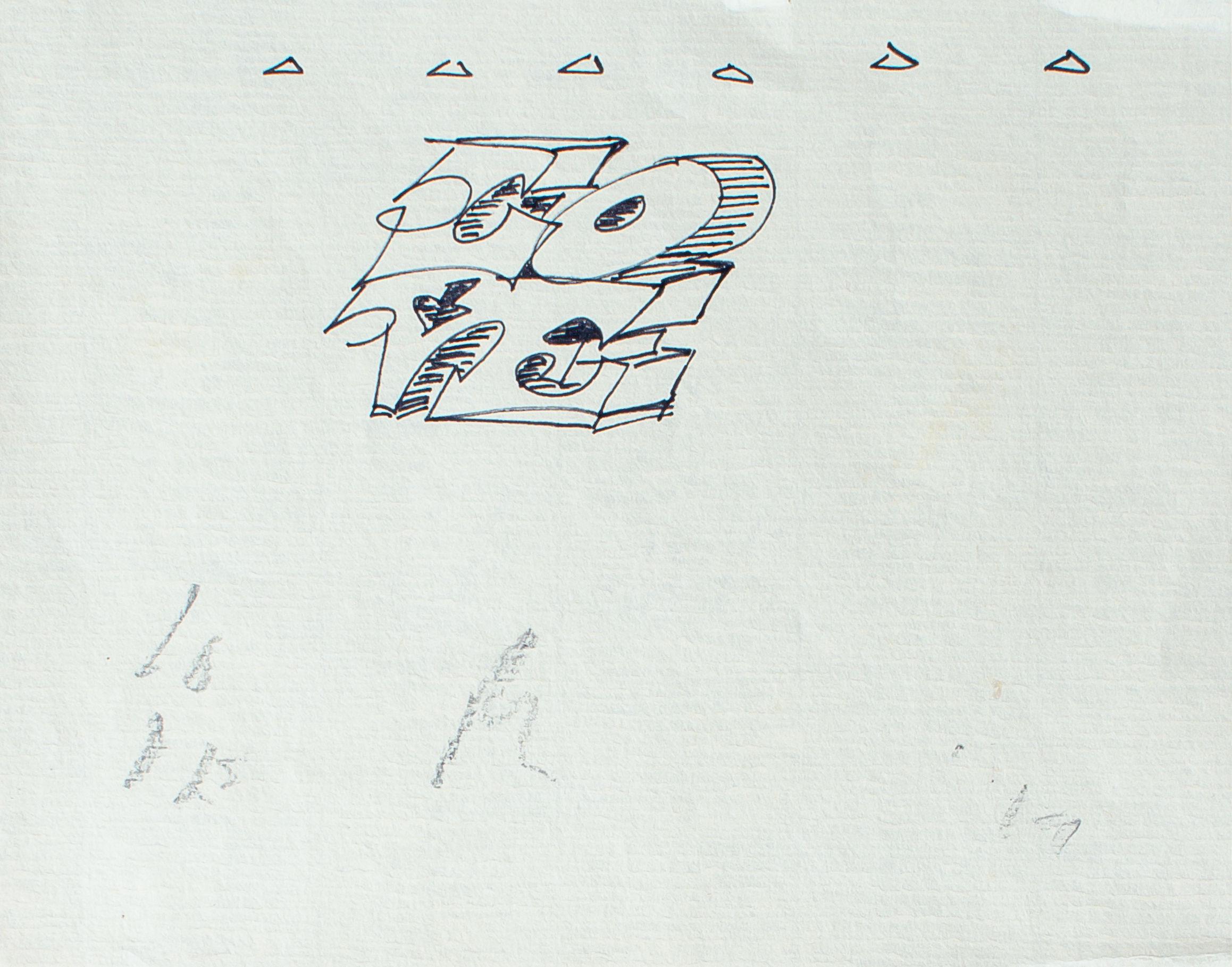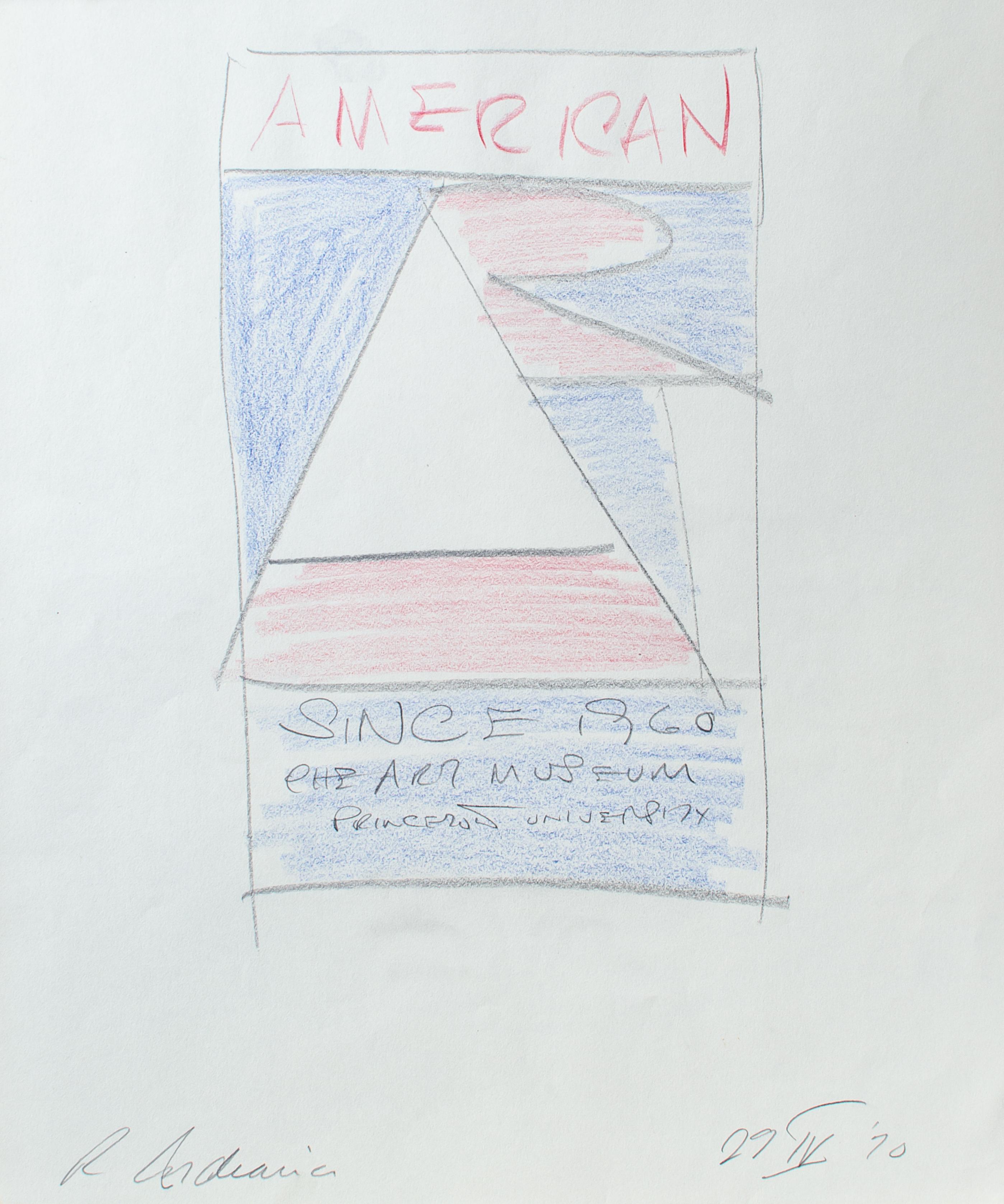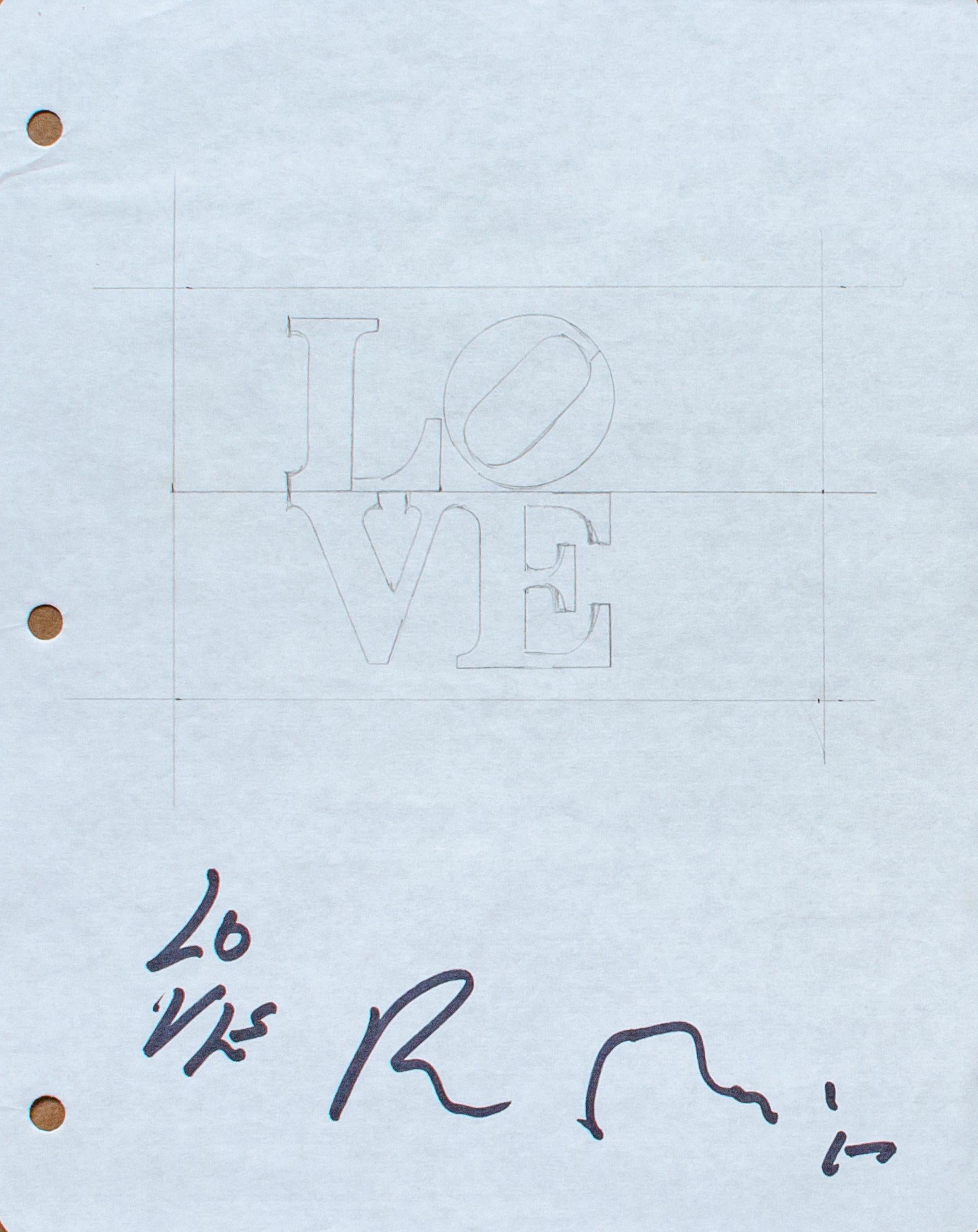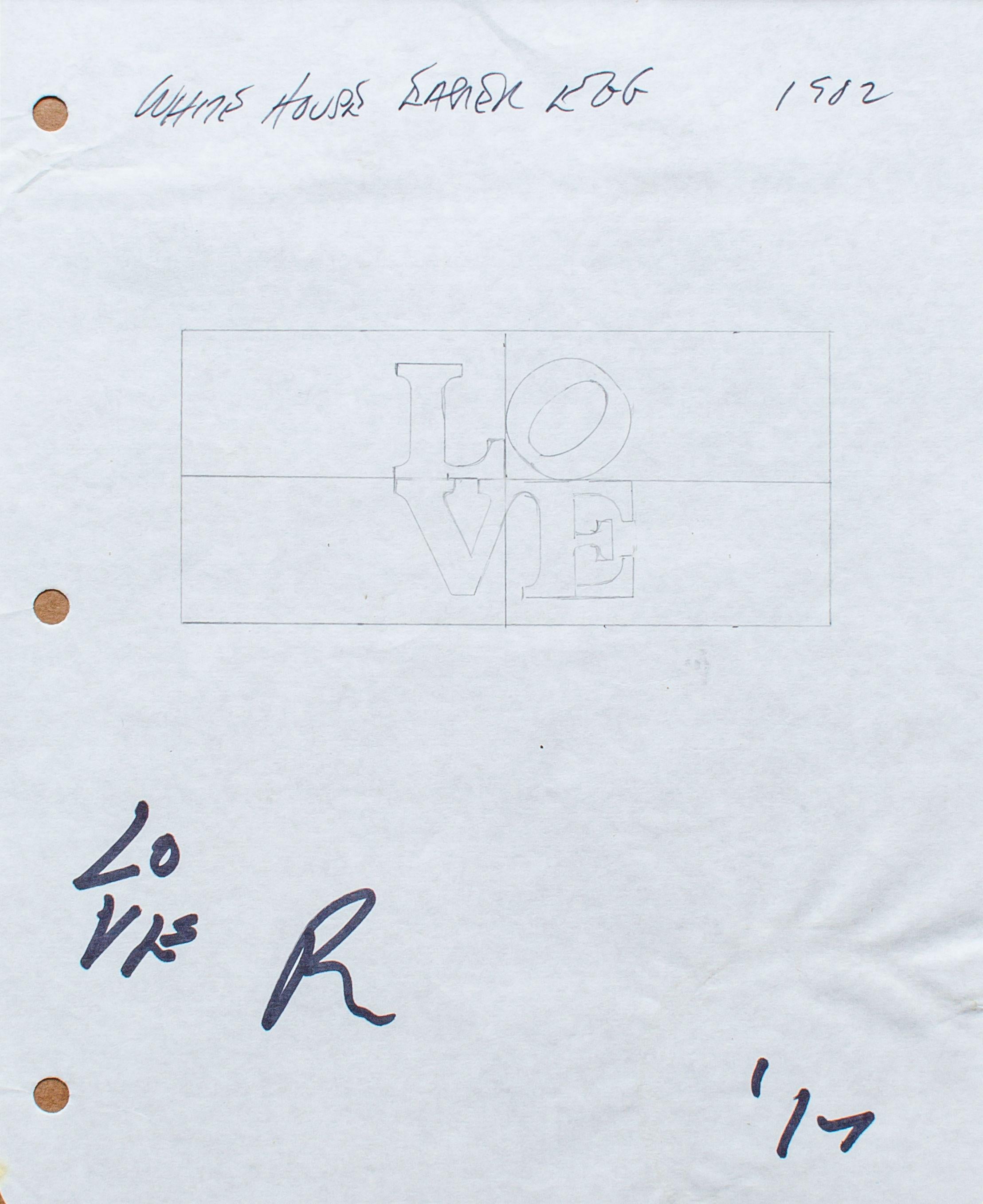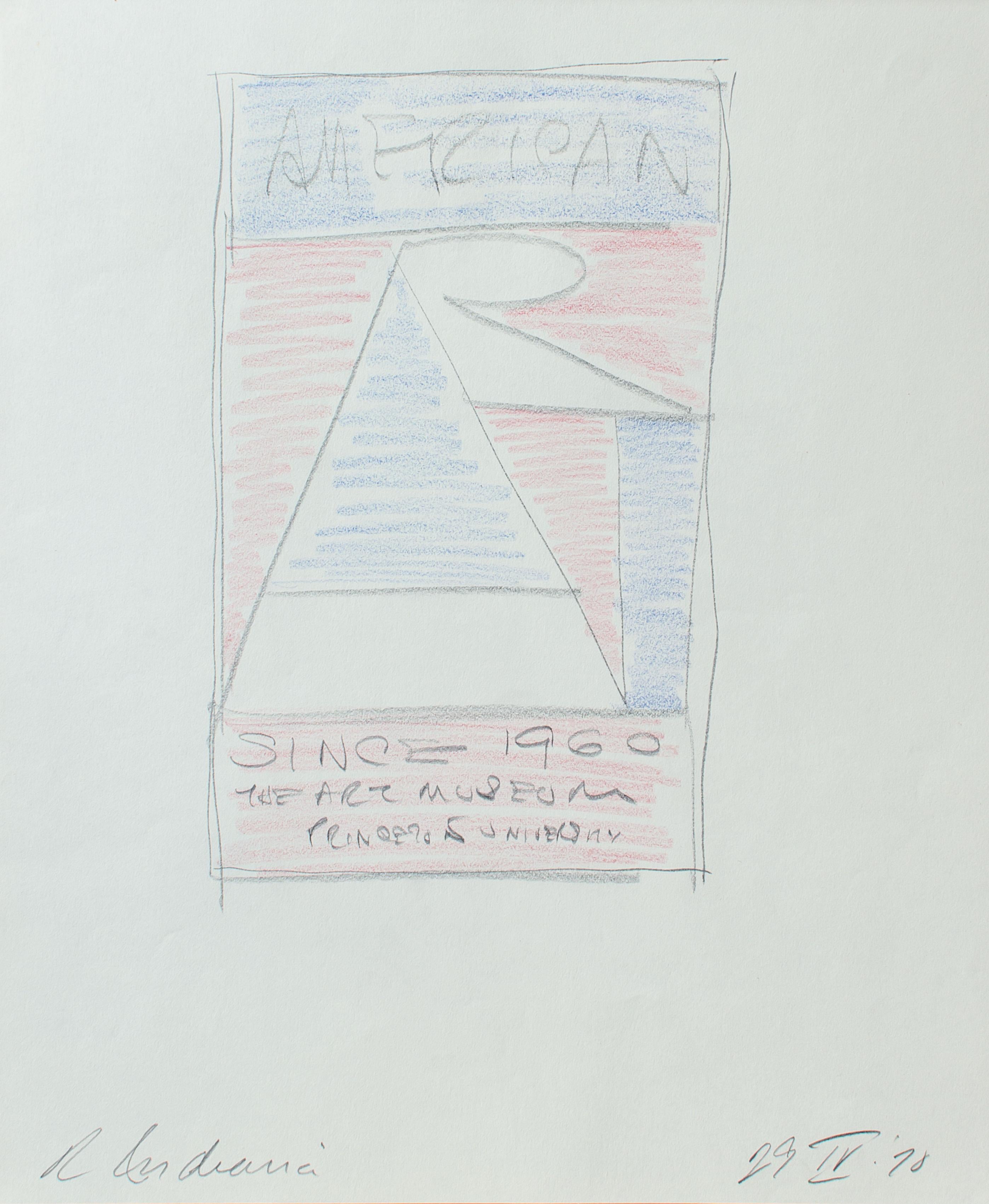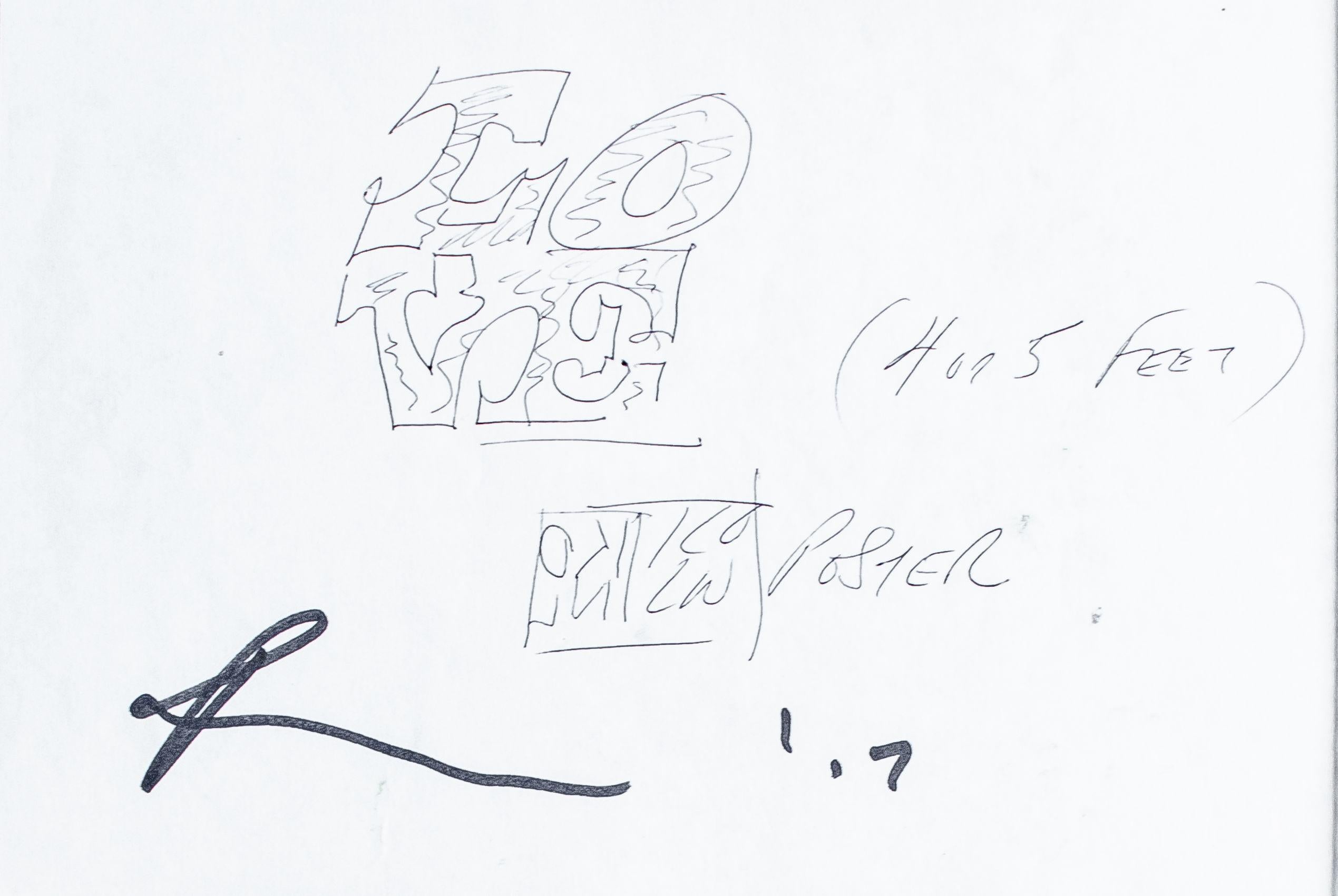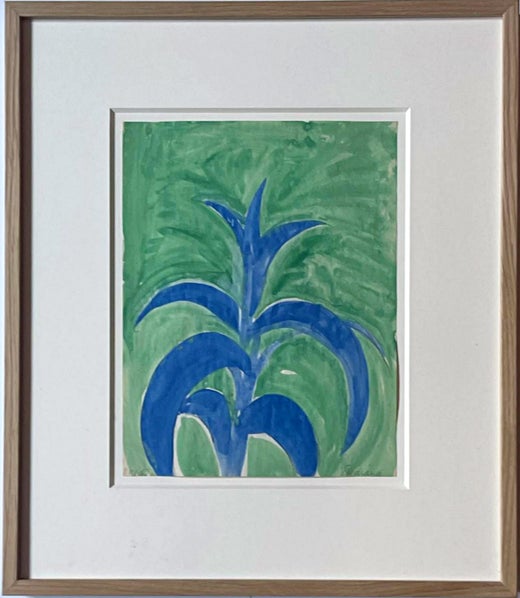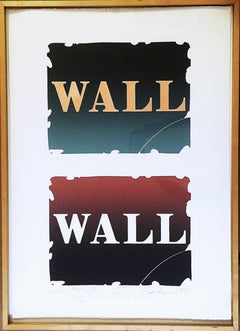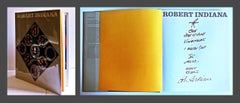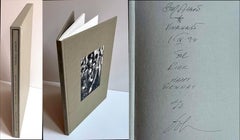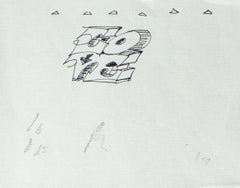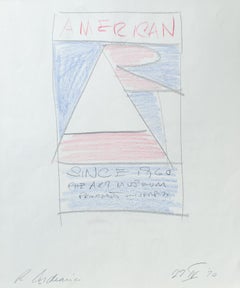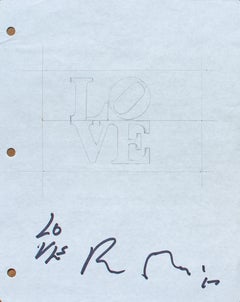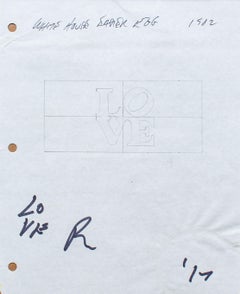Robert Indiana
Illustrated To-Do List (Hand Signed by Robert Indiana)
Black and green marker on paper, signed in graphite pencil verso
A unique one of a kind piece for any true collector, scholar, fan or follower of the legendary artist Robert Indiana:
This is an amazing artifact from legendary artist Robert Indiana's studio in Vinalhaven Maine. It is an illustrated To-Do List, that is at once mundane, but also sublime. This, in fact, was acquired from the Estate of Robert Indiana. Before his passing, his studio manager had the good sense to make sure the artist signed the sheet in graphite pencil with a love salutation on the verso. While this drawing is undated, one of the entries is "camera chips" - which were popular in the mid 1990s, so based upon the writing and active entries, this drawing was likely created around that time. We can all relate to one item on the very top of Robert Indiana's To-Do list: "TAXES"....However the rest of the entries are very specific to him, such as:
V/H Cop (Vinalhaven Cop)
Camera Chips
Wood
Large 100 Watt Bulbs
LOVE Library
Polygons
Straw for the goose pen
Water for the goose pools
Small canvases
Sponges
Brown pens
Cigars
Topsham (a town in Maine – about ½ hour from Vinalhaven)
State House Legal Letter (the State House in Maine has a Robert Indiana commissioned work)
Greenberg’s Rockland ? Numbers
Park Avenue photos
This is hand signed Love, Robert Indiana in pencil on the verso of the sheet.
Provenance: Robert Indiana Studio, Estate of Robert Indiana
This work is elegantly floated and framed in a museum quality wood frame under UV plexiglass, with a die-cut window in the back to reveal the artist's signature.
Measurements:
Framed
14.5 inches vertical by 12.5 inches horizontal by 1.5
Drawing:
11 inches vertical by 8.5
ROBERT INDIANA BIOGRAPHY
One of the preeminent figures in American art since the 1960s, Robert Indiana played a central role in the development of assemblage art, hard-edge painting, and Pop art.
Indiana, a self proclaimed “American painter of signs,” created a highly original body of work that explores American identity, personal history, and the power of abstraction and language, establishing an important legacy that resonates in the work of many contemporary artists who make the written word a central element of their oeuvre.
Robert Indiana was born Robert Clark in New Castle, Indiana on September 13, 1928. Adopted as an infant, he spent his childhood moving frequently throughout his namesake state. His artistic talent was evident at an early age, and its recognition by a first grade teacher encouraged his decision to become an artist. In 1942, Indiana moved to Indianapolis in order to attend Arsenal Technical High School, known for its strong arts curriculum. After graduating he spent three years in the U.S. Air Force and then studied at the Art Institute of Chicago, the Skowhegan School of Sculpture and Painting in Maine, and the Edinburgh College of Art in Scotland.
In 1956, two years after moving to New York, Indiana met Ellsworth Kelly, and upon his recommendation took up residence in Coenties Slip, once a major port on the southeast tip of Manhattan. There he joined a community of artists that would come to include Kelly, Agnes Martin, James Rosenquist, and Jack Youngerman. The environment of the Slip had a profound impact on Indiana’s work, and his early paintings include a series of hard-edge double ginkgo leaves inspired by the trees which grew in nearby Jeannette Park. He also incorporated the ginkgo form into his nineteen-foot mural Stavrosis (1958), a crucifixion pieced together from forty-four sheets of paper that he found in his loft. It was upon completion of this work that Indiana adopted the name of his native state as his own.
Indiana, like some of his fellow artists, scavenged the area’s abandoned warehouses for materials, creating sculptural assemblages from old wooden beams, rusted metal wheels, and other remnants of the shipping trade that had thrived in Coenties Slip. While he created hanging works such as Jeanne d’Arc (1960–62) and Wall of China (1960–61), the majority were freestanding constructions which Indiana called “herms” after the sculptures that served as boundary markers at crossroads in ancient Greece and Rome. The discovery of nineteenth-century brass stencils led to the incorporation of brightly colored numbers and short emotionally charged words into these sculptures as well as canvases, and became the basis of his new painterly vocabulary.
-Courtesy PACE Gallery
